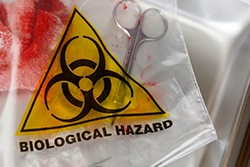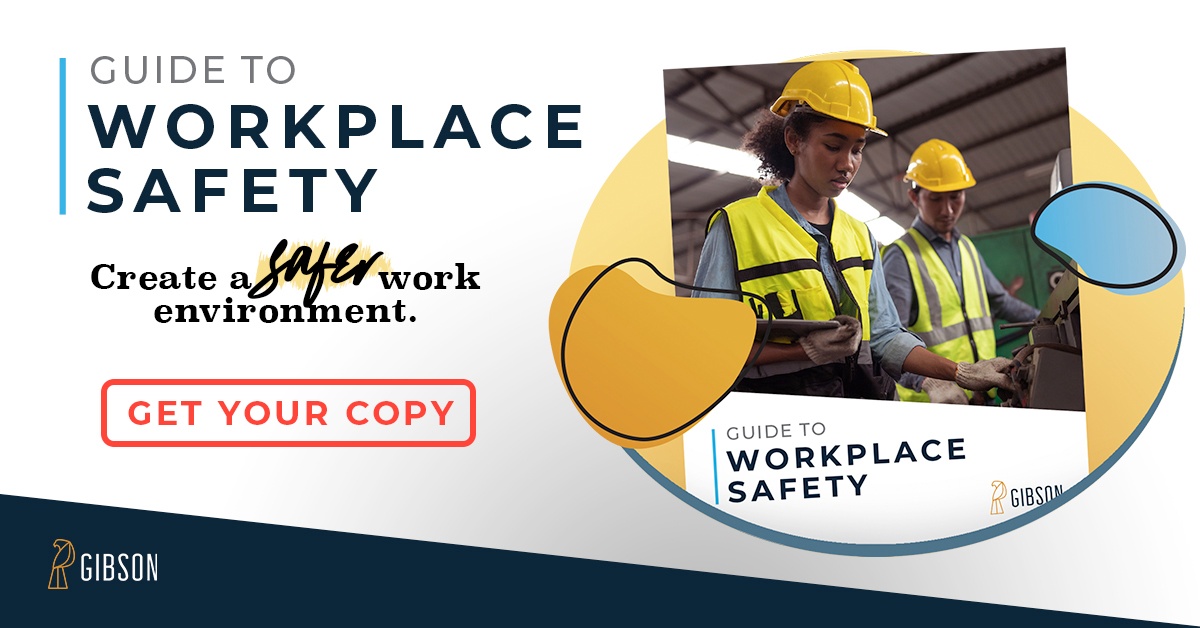 Think only health care workers and first responders are in danger of bloodborne pathogen exposure? Custodians, laundry workers, employees performing first aid, those who service medical equipment, law enforcement personnel, among others, can even be exposed to blood and other potentially infectious materials on the job.
Think only health care workers and first responders are in danger of bloodborne pathogen exposure? Custodians, laundry workers, employees performing first aid, those who service medical equipment, law enforcement personnel, among others, can even be exposed to blood and other potentially infectious materials on the job.
Bloodborne pathogens are microorganisms present in human blood that can lead to diseases and serious illnesses including human immunodeficiency virus (HIV), hepatitis B, and hepatitis C. Transmission occurs via contact with another person’s blood or bodily fluid that may contain blood. This could happen through the infiltration of a mucous membrane such as the eyes, mouth, or nose, or through non-intact skin or contaminated sharps/needles.
In protecting your workforce, it is critical for you to know the basics of bloodborne pathogens and the many ways you can prevent their exposure.
Universal Precautions
Universal precautions are the basic approach to preventing exposures of bloodborne pathogens and protecting individuals from exposure. It means you treat ALL blood and bodily fluids as if they are contaminated, utilizing both safe work practices and personal protective equipment. When you encounter any materials that you suspect could be contaminated by blood or other potentially infections materials, you respond as if bloodborne pathogens are in fact present.
OSHA’S Bloodborne Pathogens Standard
To protect employees, OSHA has a standard detailing how employers should handle bloodborne pathogens. Numerous states have also adopted their own standards and enforcement policies related to the topic. Though for the most part these standards are identical to what is outlined by the Federal OSHA requirements, it is important to make sure you understand the standard for your specific state.
Who does the standard apply to?
According to OSHA, the standard protects workers who “can reasonably be anticipated to come into contact with blood or other potentially infections materials as a result of doing their job duties.”
What does the standard require of employees?
- Establish a control plan, which must be updated annually
- Implement the use of universal precautions
- Identify and use engineering controls
- Identify and ensure the use of work practice controls
- Provide personal protective equipment (PPE)
- Make available hepatitis B vaccinations to all workers with occupational exposure
- Make available post-exposure evaluation and follow-up to any occupational exposed worker who experiences an exposure incident
- Use labels and signs to communicate hazards
- Provide information and training to workers
- Maintain worker medical and training records
If An Exposure Occurs…
If a specific incident of contact with a potentially infectious bodily fluid occurs, wash the exposed area with soap and water, report the exposure, and direct the worker to a health care professional. You must also properly decontaminate the area. Remove contaminated PPE or clothing as soon as possible, clean and disinfect equipment and work surfaces, and properly dispose of any contaminated items.
NIOSH and OSHA also recommend that employers:
- Establish a procedure for post-exposure evaluation and follow-up.
- Document the route of exposure and other circumstances. Identify the source individual where feasible.
- Offer post-exposure medical evaluation by a health care professional at no cost to employees.
- Test the source individual’s blood for bloodborne pathogens where possible, and test the exposed employee’s blood after consent is obtained.
- Ensure the provision of post-exposure medication when medically indicated and as recommended by the Department of Health & Human Services.
Additional Resources
- OSHA Safety & Health Topics – Bloodborne Pathogens and Needlestick Prevention
- OSHA and NIOSH Information for Employers: Complying with OSHA’s Bloodborne Pathogens Standard
- NIOSH Bloodborne Pathogens Topic Page
- NIOSH Engineering Controls Resources




